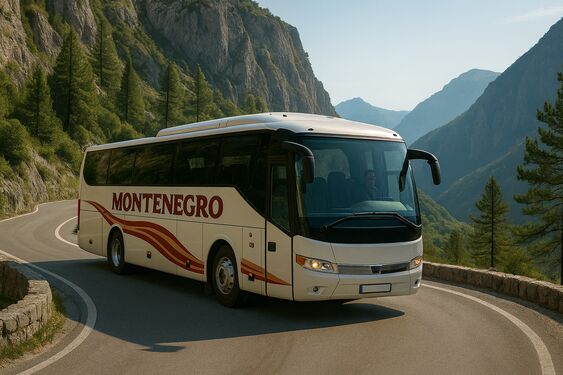Public Transport and Getting Around in Montenegro

Montenegro is a country where having a car or at least a driver’s license is a huge advantage. It’s not only a matter of freedom of movement but often the basic possibility—or impossibility—of getting anywhere without spending a fortune. But what if you belong to that group of people who don’t yet have a driver’s license? Let’s figure it out. So…
If you have a license but no ride:
Ride-sharing services of all types and price categories are at your disposal. Scooters, e‑scooters, cars of all sizes and trims—take your pick!
Prices vary. Daily car rental typically ranges from €25 to €70. For long-term rentals, some friends have found deals around €400/month. But such bargains can be hard to find.
Fuel prices:
Gasoline: 98 and 95 cost €1.42 and €1.45 per liter, respectively—standard for Europe.
Diesel: €1.28/l
These prices are the same everywhere and don’t vary by company or station. While some may find them relatively high, this is offset by short distances and a high density of scenic spots. Plus, cars here are much cheaper if you decide to buy instead of rent.
*By the way, gas stations here have it all: food, drinks, household items, and even CDs.
In any case, renting a car for a day or two to explore this country’s diverse landscapes and beauty is an absolute must!
What about public transport?
In short, it’s buses and ride requests via Telegram chats.
Intercity buses and minibuses constantly run between towns. Schedule frequency varies by route popularity, but generally, there are no major issues traveling between main settlements.
Price: from €2.50 to €10 per trip, depending on distance.
Schedule accuracy: It’s relative. A 10–15 minute delay is normal, depending on weather, traffic jams, roadwork, or even if the driver stops to chat with a friend at a traffic light.
Alternative: post in a Telegram group requesting a ride from point A to B at a specific time. You can travel from Budva to Bar cheaply or even free—depending on your agreement—with more comfort.
Getting around in cities.
Podgorica has public transport. In coastal towns, without a car you can only walk or take a taxi. But there’s an alternative—an e‑scooter or moped. In heavy traffic (especially in high season) and over short distances, this is a pragmatic and popular choice.
Yes, there are TRAFFIC JAMS.
And it’s a problem.
Because the main coastal road from Croatia to Albania is essentially a single two‑lane serpentine. Getting stuck in the middle of a breathtaking view, blocked by dozens of other vehicles, is not uncommon.
Especially in peak season.
Especially during strikes or protests (which occur quite regularly).
Especially when road repairs are underway.
You get the idea.)
What about attending a local driving school and getting a license?
You can. Training lasts about one and a half to two months and is similar to the process in former Soviet countries.
A standard Category B license costs around €350–450, including medical certificates and exams.
The maximum total, including extra lessons and retakes, can reach €600–900.
Can you exchange your foreign license for a local one?
Yes, this option exists and is very popular among expats. You need a Montenegrin residence permit (VNZh), and the rest is generally straightforward.
Conclusions.
You can manage without driving in Montenegro. But if you want true freedom of movement, learn to drive. Buses and ride-sharing will help—but full comfort and spontaneity start with your own steering wheel.
Author: Oleg Pivovar

